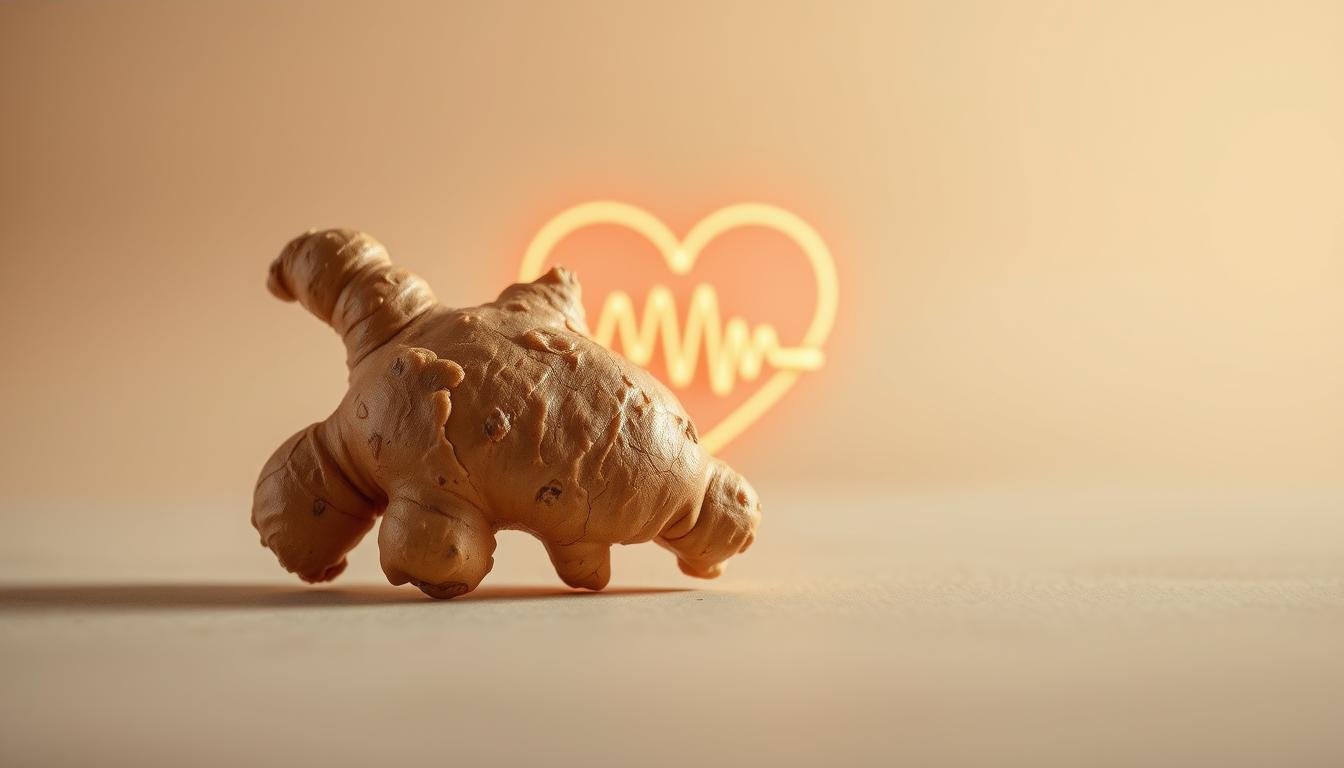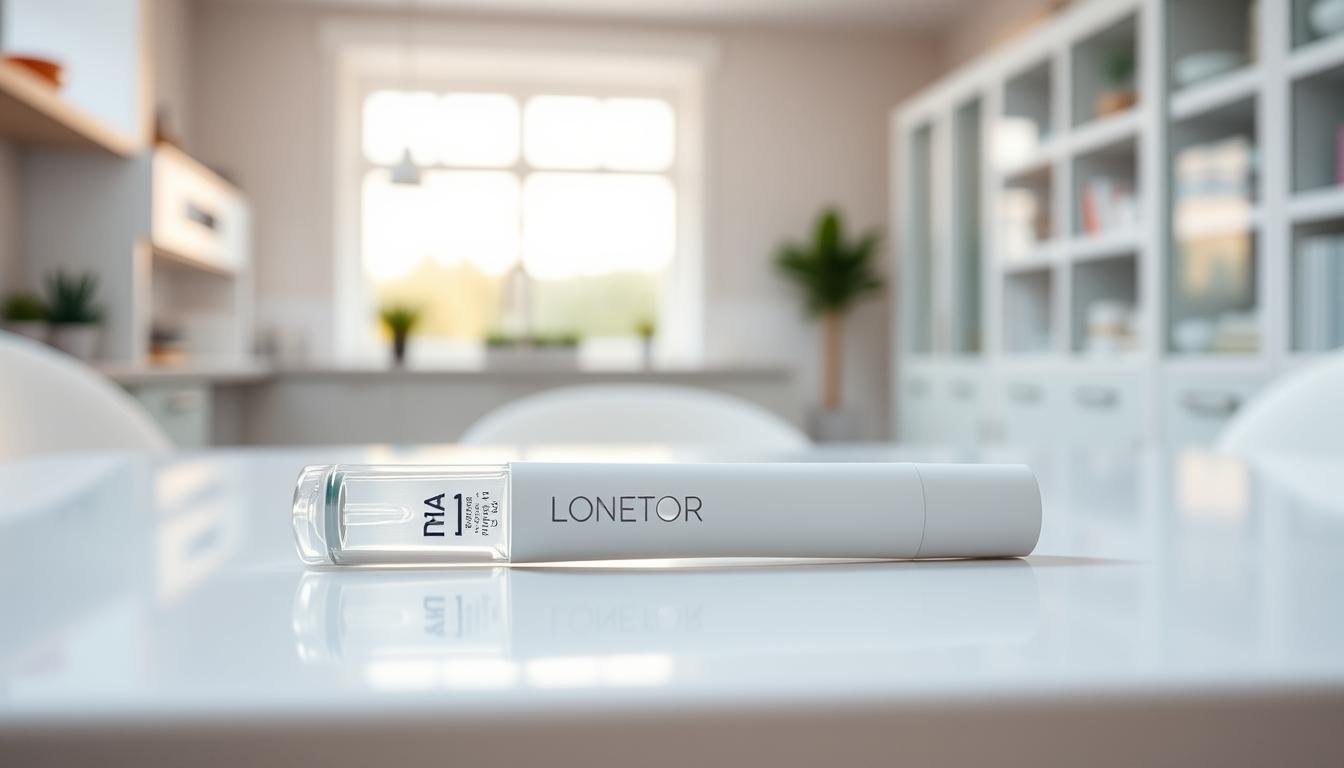New research shows big health wins when we make exercise a priority. Sadly, 51% of adult Canadians don’t get enough physical activity. This is a big public health problem. Dr. Euan Ashley says even a little bit of movement helps, like 30-45 minutes of moderate exercise five to six times a week.
Studies with over 30 million people show that regular activity can cut death rates by 20%-35%. This proves that exercise can help us live longer. It’s clear that even small efforts can lead to big health benefits.
Research shows that small steps can make a big difference. For example, walking for just two hours a week can lower the risk of early death by 39%-54% for people with diabetes. And doing 11 minutes of moderate activity each day can cut death risk by 25%.
The 2018 guidelines suggest we should do 150-300 minutes of moderate exercise each week. But, sadly, only about half of U.S. adults reach this goal. These findings highlight how exercise can change our health in many ways, from physical to mental and even how long we live.
Key Takeaways
- Regular exercise reduces all-cause mortality by 20%-35% for men and women.
- Dr. Ashley’s research links 11 daily minutes of activity to a 25% lower death risk.
- 30 million participants in a major study validate exercise’s role in disease prevention.
- U.S. guidelines advise 150+ minutes of moderate activity weekly, but only 50% meet this.
- Small increases in activity, like 75 weekly minutes, trigger significant health improvements.
The Importance of Regular Exercise
Recent exercise benefits study findings show how exercise boosts overall wellness. The U.S. Department of Health and Human Services sets guidelines. Adults need 150–300 weekly minutes of moderate activity or 75–150 minutes of vigorous exercise.
These standards, backed by the latest exercise benefits research, aim for health gains. They also set realistic goals for all fitness levels.
Understanding Physical Activity Guidelines
Moderate and vigorous activity differ in intensity but both improve health. Examples of moderate exercise include:
- Brisk walking
- Cycling on flat terrain
- Gardening
Vigorous activities like running, aerobic dancing, or swimming laps increase heart rate. The exercise benefits study highlights the value of every minute. Even small sessions add to your weekly totals.
Key Recommendations for Adults
Experts suggest strength training twice weekly to build muscle and bone density. For the best results:
- Choose activities you enjoy to stay consistent
- Increase weekly minutes gradually to enhance longevity
- Combine moderate and vigorous activity for balanced benefits
Even exceeding the minimum guidelines can lead to better outcomes. A 2023 analysis found that adults meeting higher benchmarks had a 35% lower risk of chronic diseases. Tailor routines to fitness levels, but prioritize movement daily.
Mental Health Benefits of Exercise
Recent studies show a strong link between exercise and mental health. Benefits of exercise research reveal even short workouts can lower anxiety and depression. A 2019 Harvard study found 15 minutes of daily running can cut major depression risk by 26%.
Exercise changes brain chemistry, helping with mental health. Aerobic activities like walking or swimming lower stress hormones. A 2021 study found exercise improved sleep and energy in schizophrenia patients.
Yoga in clinical trials also showed it can reduce depression better than regular exercise.
Reducing Symptoms of Anxiety and Depression
Exercise changes brain chemistry to fight mental health issues. Aerobic exercises like walking or swimming reduce stress hormones like cortisol. A 2021 meta-analysis of 17 studies showed exercise reduced negative symptoms in schizophrenia patients by improving sleep and energy levels.
Yoga interventions in clinical trials also reduced depressive symptoms more effectively than traditional exercise alone.
Boosting Mood and Overall Well-Being
- Endorphin release during exercise creates immediate mood lifts
- Regular activity increases BDNF, a protein supporting neuron growth
- 30 minutes of moderate exercise 5x weekly improves focus and sleep quality
Studies show 12-minute fitness tests reduced cravings in alcohol use disorder patients by 40%. Exercise also boosts self-esteem through achievable goals, like completing a daily walk. The World Health Organization notes exercise can rival antidepressants for mild to moderate depression without side effects.
Even fragmented workouts—three 10-minute walks daily—deliver mental health gains.
Exercise and Weight Management
Exercise is key for managing weight, as studies from the National Weight Control Registry show. More than 94% of people who lost weight and kept it off exercise regularly. They found that exercising and controlling calories together boosts health and body shape.
“Aerobic training of at least 150 minutes weekly improves weight loss outcomes,” state 2019 guidelines from the American College of Sports Medicine.
- Resistance training helps keep muscle while losing fat, as studies show a 0.8 kg muscle gain during dieting.
- High-Intensity Interval Training (HIIT) increases calorie burn by up to 15% after exercise compared to steady cardio.
- Regular activity makes the body better at using insulin, helping lose fat even when not exercising.
Research shows that diet and exercise together work best. A 2016 review found:
- Together, they lead to 3-4% more fat loss than diet alone.
- 500-calorie daily deficits (from diet and exercise) help keep muscle while losing fat.
- Eating around workouts helps use nutrients better, like yoga practitioners who ate less when stressed.
Long-term success comes from lasting habits. The CDC suggests 150 minutes of moderate activity and strength training twice a week. For the best results, focus on being consistent rather than how hard you’re working. Small, daily changes add up over time.
Building a Stronger Immune System
Recent exercise benefits update shows how physical activity boosts our immune system. The last research about exercise benefits found that moderate exercise increases immune cells and lowers inflammation. But, too much exercise can actually weaken our immune system, especially for athletes.
Exercise’s Role in Immune Function
Scientists have discovered how exercise affects our immunity. A 2023 study in the Journal of Sport and Health Science found:
| Activity Level | Infection Risk |
|---|---|
| Moderate exercise (30 mins/day) | 23% lower illness reports |
| Elite endurance training | 2x higher URTI rates |
Seasonal Considerations for Health
Winter workouts need special care. Here are some tips:
- Layer clothing during cold runs
- Maintain hydration to protect mucosal barriers
- Limit high-intensity sessions during flu peaks
“Exercise acts as a biological stressor that primes immune cells when done appropriately,” says Dr. David Nieman, Appalachian State University researcher.
Data shows 13% of marathon runners got sick after the race, compared to 2% of non-runners. Good routines include:
- 30-minute daily walks
- Yoga sessions for stress reduction
- Swimming in heated pools during winter
Experts say to avoid training over 90 minutes of intense effort to prevent weakening the immune system. Finding the right balance between exercise and rest helps keep our immune system strong without overdoing it.
The Impact of Exercise on Aging
Recent studies show that exercise can slow down aging. Older adults who stay active delay cellular aging. This helps keep them vital and lowers disease risk.
Slowing Down the Aging Process
High-intensity workouts help keep telomeres long, which slows aging. A study found runners who exercised 30–40 minutes daily had telomeres like those of people nine years younger. Cyclists over 55 had immune systems similar to younger adults, according to King’s College London.
These results match a 2018 study. It showed moderate exercise leads to fewer sick days and stronger immune systems.
Enhancing Mobility and Flexibility
Regular exercise boosts balance and mobility. Programs like SilverSneakers and Fit & Strong! help older adults stay independent. Key strategies include:
- 150 weekly minutes of aerobic activity, such as brisk walking
- Strength training twice weekly to combat muscle loss
- Balance exercises (≥3 hours/week) reducing fall risk by 21%
Older adults who exercise have better bone density and cognitive function. Even after 65, starting to exercise improves daily tasks and mental health, a 2019 study found.
Exercise and Cardiovascular Health
Cardiovascular disease (CVD) is a big killer in the U.S., taking nearly 600,000 lives each year. It’s a major area of study for the benefits of exercise research. The latest exercise benefits research shows that regular exercise can cut heart disease risk by 30–40%.

“Exercise is medicine for the heart.” – American Heart Association
lowering heart disease risk>
Research finds that exercising 3–5 times a week can lower blood pressure by 3.4 mmHg. Even a little more activity can reduce heart failure risk. High-intensity workouts can even shrink plaque buildup in arteries, as benefits of exercise research shows.
benefits for blood pressure and cholesterol>
Exercise boosts HDL (“good” cholesterol) and lowers LDL and triglycerides. It also helps regulate blood pressure by improving nitric oxide production and reducing artery stiffness. Studies reveal:
- 30–60 minutes of brisk walking daily cuts stroke risk by 27%.
- High-intensity interval training lowers LDL by 15% in 6 months.
Following guidelines—150 minutes weekly of moderate activity—can prevent 30% of coronary events. The latest exercise benefits research also shows that regular exercise slows down heart muscle decline with age. This helps keep the heart working well for decades.
Strength Training Benefits
Strength training is key for people of all ages. It fights muscle loss, boosts bone health, and increases energy. The latest exercise benefits update shows it helps slow down aging and prevent diseases.
Building Muscle Mass and Strength
Resistance exercises help grow muscles and improve strength. Key findings include:
- Reduces sports injuries by 33% and overuse injuries by nearly 50%.
- Cuts diabetes risk by 30% and lowers blood pressure per American Heart Association guidelines.
- Increases metabolic rate, aiding weight management and fat loss.
Muscle mass peaks around ages 30–35 but declines sharply after 65. Strength training helps keep mobility and independence in later years.
Protecting Bone Density
Bone-strengthening exercises like squats or resistance bands stimulate osteoblast activity. Studies show:
- Strength training increases bone mineral density, reducing osteoporosis risk.
- A 2021 study found weighted vest use slowed hip bone loss in older adults.
Resistance training is equally effective as stretching for improving joint flexibility, enhancing daily movement.
Experts suggest doing two weekly sessions targeting all major muscle groups. Even low-intensity programs can improve quality of life and functional independence.
Exercise and Cognitive Function
Physical activity has a big impact on the brain, as exercise advantages research shows. Studies find that regular exercise improves memory, learning, and mental sharpness. For example, recent exercise benefits findings show that aerobic activities can grow brain areas linked to memory, like the hippocampus.

- Adults with higher fitness levels have bigger hippocampal volumes and better spatial memory, a study of 165 older adults found.
- Aerobic exercise boosts BDNF, a protein that helps grow neurons, and improves attention and memory in older adults by 0.5 standard deviations (meta-analysis of 18 studies).
- Children who exercise do better on school tests, with the youngest (ages 4–13) showing the biggest cognitive gains.
Research shows that exercise fights brain shrinkage as we age. Even simple activities like walking or gardening can lower the risk of cognitive decline. A 2023 review found that active adults are half as likely to get dementia as inactive ones. For the best results, aim for 150 minutes of moderate exercise or strength training twice a week.
These findings show that exercise is not just for the body—it’s crucial for brain health throughout life. Begin with something simple: a daily walk or yoga session can start these cognitive benefits right away.
Community and Social Benefits of Group Exercise
A recent exercise benefits review found that group exercise strengthens social bonds and boosts health. Benefits of exercise research show that working out with others improves motivation and helps stick to fitness goals. Studies also confirm that group settings build camaraderie, making it easier to reach fitness goals.
Participants who cycled with friends reported 30% less stress post-workout compared to solo exercisers, per University of Southern California findings.
Fostering Connections Through Fitness
Group activities create shared goals and mutual encouragement. Key findings include:
- 95% of friends-based weight-loss groups completed programs vs. 76% solo participants
- Partner workouts increased plank endurance by 24% and doubled exercise time
- Parkrun events in 2,000+ global locations report 71% of participants value social interaction nearly as much as physical gains
Support Systems and Motivation
Group settings provide accountability. Research shows:
- Group members exercise identity scores averaged 5.74 vs. 4.66 for solo exercisers
- Participants with exercise partners had 27% higher emotional support scores
- Virtual platforms and neighborhood groups now engage 42% more members retention
Studies prove social support directly correlates with higher workout consistency. Community programs like Parkrun show 75% of users plan to continue because of social connections. Whether in gyms or digital platforms, social fitness fosters lasting commitment better than individual efforts alone.
Tailoring Your Exercise Routine
Personalizing your exercise routine is crucial for getting the most out of it. Studies, like the exercise benefits study on older adults with knee OA, show that fun activities and achievable goals help you stick with it. Dr. Ashley says it’s more important to be consistent than to worry about when you exercise. Regular movement is good for your health, no matter when you do it.
With 97% of participants in the OA trial sticking to their plans, it’s clear that tailored programs work well. They help keep people involved in the long run.
Finding Activities You Enjoy
Choosing activities that make you happy is key to staying on track. In the OA study, 91.4% of people stuck with their routines when they liked the exercises. Nature-based activities, like beach walks, are great for both your mind and body.
Trying out different things, like yoga, swimming, or cycling, can help you find what you enjoy. This way, you’re more likely to keep doing it for a long time.
Setting Realistic Goals for Success
Setting goals that are within reach is important. The Black Dog Institute found that 16 weeks of exercise can be as good as antidepressants for mild depression. Programs like Altius Group’s RAWI combine exercise with healthy eating and sleep tracking for better overall health.
Even small goals, like walking every day, can make a big difference. They can lower your risk of diabetes by 58% if you also lose weight. It shows that small steps can lead to big changes.
Exercise studies often say that being consistent is more important than how hard you exercise. Whether it’s through group programs or doing things at home, finding fun activities and making progress slowly is the key. Focusing on what works best for you leads to lasting results.
FAQ
What are the latest findings regarding exercise benefits?
How much exercise is recommended for adults?
What role does exercise play in mental health?
How does exercise aid in weight management?
What does exercise do for the immune system?
How can exercise influence the aging process?
What is the relationship between exercise and cardiovascular health?
How does strength training benefit overall health?
What impact does exercise have on cognitive function?
How does group exercise influence social connections?
What strategies can help individuals enjoy and maintain their exercise routines?
Source Links
- Health benefits of physical activity: the evidence
- Massive study uncovers how much exercise is needed to live longer
- Even brief amounts of exercise have health benefits
- 7 great reasons why exercise matters
- Benefits of Exercise: MedlinePlus
- Health Benefits of Exercise and Physical Activity
- Role of Physical Activity on Mental Health and Well-Being: A Review
- Exercise for Mental Health – PMC
- How Does Exercise Improve Mental Health?
- Role of Physical Activity for Weight Loss and Weight Maintenance
- Exercise and Weight Loss: Importance, Benefit, and Examples
- Effect of exercise training on weight loss, body composition changes, and weight maintenance in adults with overweight or obesity: An overview of 12 systematic reviews and 149 studies
- Exercise and immunity: MedlinePlus Medical Encyclopedia
- The compelling link between physical activity and the body’s defense system
- The Importance of Physical Activity Exercise among Older People
- Does Exercise Have an Effect on Our Minds and Bodies?
- Why Exercise Matters After 60
- Cardiovascular Effects and Benefits of Exercise
- American Heart Association Recommendations for Physical Activity in Adults and Kids
- 14 Benefits of Strength Training, Backed by Science
- Strength training: Get stronger, leaner, healthier
- How can strength training build healthier bodies as we age?
- Physical Activity Boosts Brain Health
- The Influence of Exercise on Cognitive Abilities
- Frontiers | Effects of Physical Exercise on Cognitive Functioning and Wellbeing: Biological and Psychological Benefits
- Why it’s easier to get fit in a group
- Social reward and support effects on exercise experiences and performance: Evidence from parkrun
- Group exercise membership is associated with forms of social support, exercise identity, and amount of physical activity
- Effects of a tailor-made exercise program on exercise adherence and health outcomes in patients with knee osteoarthritis: a mixed-methods pilot study
- The Benefits of a Tailored Exercise Program
- Exercise Benefits to Get You Moving



